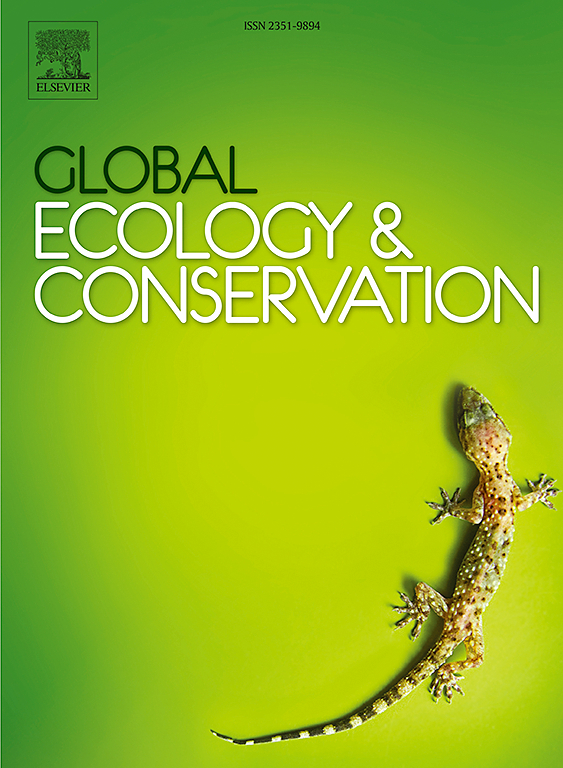The influence of grazing intensity and wetland availability on breeding shorebird populations in a Eurasian steppe
IF 3.5
2区 环境科学与生态学
Q1 BIODIVERSITY CONSERVATION
引用次数: 0
Abstract
Traditional grazing has a long history on the steppes of Eurasia, dating back to as early as the Late Stone Age, which has contributed to present landscape composition and habitat topology. However, the number of livestock grazing in the steppes has significantly reduced during the past four decades. This exerted multiple detrimental effects in protected areas, by accelerating succession processes and leading to the declining quality of natural grassland habitats. This might have contributed to the global decline of shorebird populations that led even to local extinctions in a number of species. Here we aimed to investigate relationships among attributes of grazing and breeding population of shorebirds applying standardised surveys at ten sample sites in Hortobágy, the largest interconnected alkali steppe of Europe. We found that grazing pressure showed positive relationships with population sizes of nearly all shorebirds species. The number of breeding pairs increased with the density of grazing livestock. While only 15 % of waders bred in areas with less than 1,0 grazing unit/ha, this ratio amounted to 71 % in areas exceeding 1,5 grazing unit/ha. In several species, we found positive relationships between the number of breeding pairs and the size of open water surface. 81 % of breeding populations bred in sample sites where the extent of open water exceeded 10 ha. These findings support the hypothesis that grazing is a key driver of breeding in shorebirds in grassland ecosystems.
放牧强度和湿地可利用性对欧亚草原滨鸟繁殖种群的影响
欧亚大陆草原上的传统放牧历史悠久,最早可追溯到石器时代晚期,形成了今天的景观构成和生境拓扑结构。然而,在过去四十年中,草原上放牧的牲畜数量显著减少。这对保护区产生了多重不利影响,加速了演替过程,导致天然草地生境质量下降。这可能导致了全球滨鸟数量的减少,甚至导致了一些物种的局部灭绝。本文采用标准化调查的方法,对欧洲最大的互联碱草原Hortobágy的10个样点进行了放牧种群与繁殖种群之间的关系研究。我们发现放牧压力与几乎所有滨鸟物种的种群规模呈正相关。繁殖对数随放牧家畜密度的增加而增加。在少于1000个放牧单位/公顷的地区,只有15 %的涉禽繁殖,而在超过1.5个放牧单位/公顷的地区,这一比例达到71 %。在一些物种中,我们发现繁殖对的数量与开放水面的大小呈正相关。81 %的繁殖种群在开阔水域面积超过10 ha的取样地点繁殖。这些发现支持了放牧是草原生态系统中滨鸟繁殖的关键驱动因素的假设。
本文章由计算机程序翻译,如有差异,请以英文原文为准。
求助全文
约1分钟内获得全文
求助全文
来源期刊

Global Ecology and Conservation
Agricultural and Biological Sciences-Ecology, Evolution, Behavior and Systematics
CiteScore
8.10
自引率
5.00%
发文量
346
审稿时长
83 days
期刊介绍:
Global Ecology and Conservation is a peer-reviewed, open-access journal covering all sub-disciplines of ecological and conservation science: from theory to practice, from molecules to ecosystems, from regional to global. The fields covered include: organismal, population, community, and ecosystem ecology; physiological, evolutionary, and behavioral ecology; and conservation science.
 求助内容:
求助内容: 应助结果提醒方式:
应助结果提醒方式:


